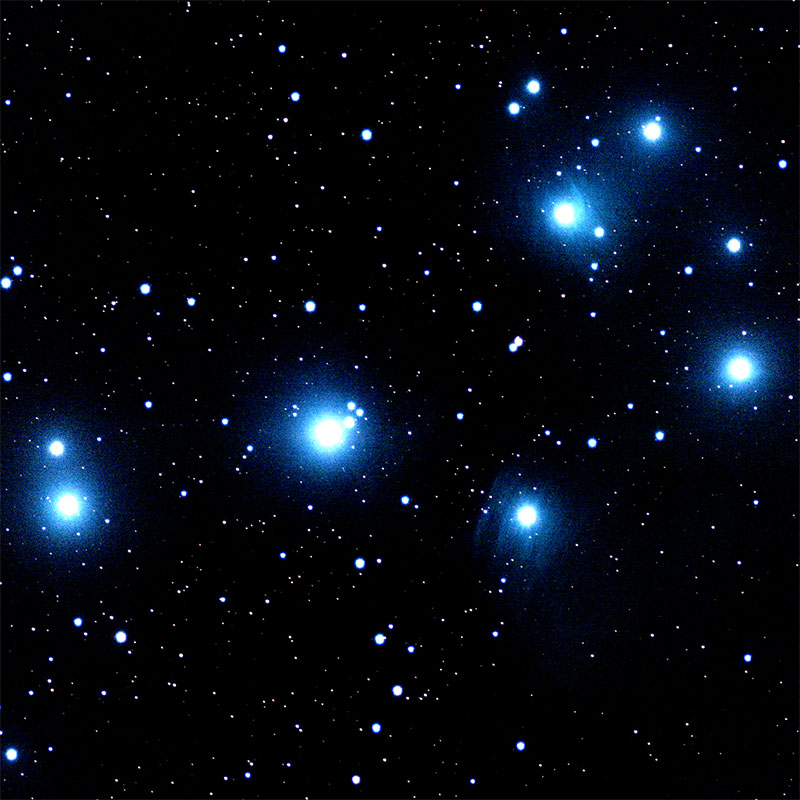M45 - The Pleiades or Seven Sisters

Credits: Keith Turnecliff, Long Itchington
Messier 45 (M45), also known as the Pleiades or Seven Sisters, is a bright open star cluster located in the constellation Taurus, the Bull.
The Pleiades cluster has an apparent magnitude of 1.6 and lies at an average distance of 444 light years from Earth. The cluster is also known as Melotte 22. It does not have an NGC designation.
Messier 45 contains a number of hot, blue, extremely luminous B-type stars and is one of the nearest star clusters to Earth. It is the easiest object of its kind to see without binoculars.
M45 has a core radius of 8 light years and its tidal radius extends to about 43 light years.
The cluster is home to more than 1,000 confirmed members, but only a handful of these stars are visible to the naked eye. The total mass of M45 is estimated at about 800 solar masses.
The Pleiades cluster occupies an area of 110 arc minutes, about four times the apparent diameter of the full Moon.
Up to 14 stars are visible without binoculars in good conditions, with clear skies and no light pollution.
The best time of year to observe M45 from northern latitudes is during the winter months, when Taurus constellation rises high in the sky. Because of the cluster’s apparent size,
the best way to see it is through binoculars and small or wide field telescopes. Higher magnification is only recommended for studying individual stars.
Facts about M45 by Keith Turnecliff
The Pleiades are an open star cluster containing middle-aged, hot B-type stars in the north-west of the constellation Taurus.
It is among the star clusters nearest Earth and is the cluster most obvious to the naked eye in the night sky.
The cluster is dominated by hot blue and luminous stars that have formed within the last 100 million years.
Reflection nebulae around the brightest stars were once thought to be left over material from the formation of the cluster,
but are now considered likely to be an unrelated dust cloud in the interstellar medium through which the stars are currently passing.
Computer simulations have shown that the Pleiades were probably formed from a compact configuration that resembled the Orion Nebula.
Astronomers estimate that the cluster will survive for about another 250 million years, after which it will disperse due to gravitational interactions with its galactic neighbourhood.

Best viewed with Vaonis Stellina.
Credits: Image courtesy of Starry Night Pro Plus 8, researched and implemented by Keith Turnecliff.